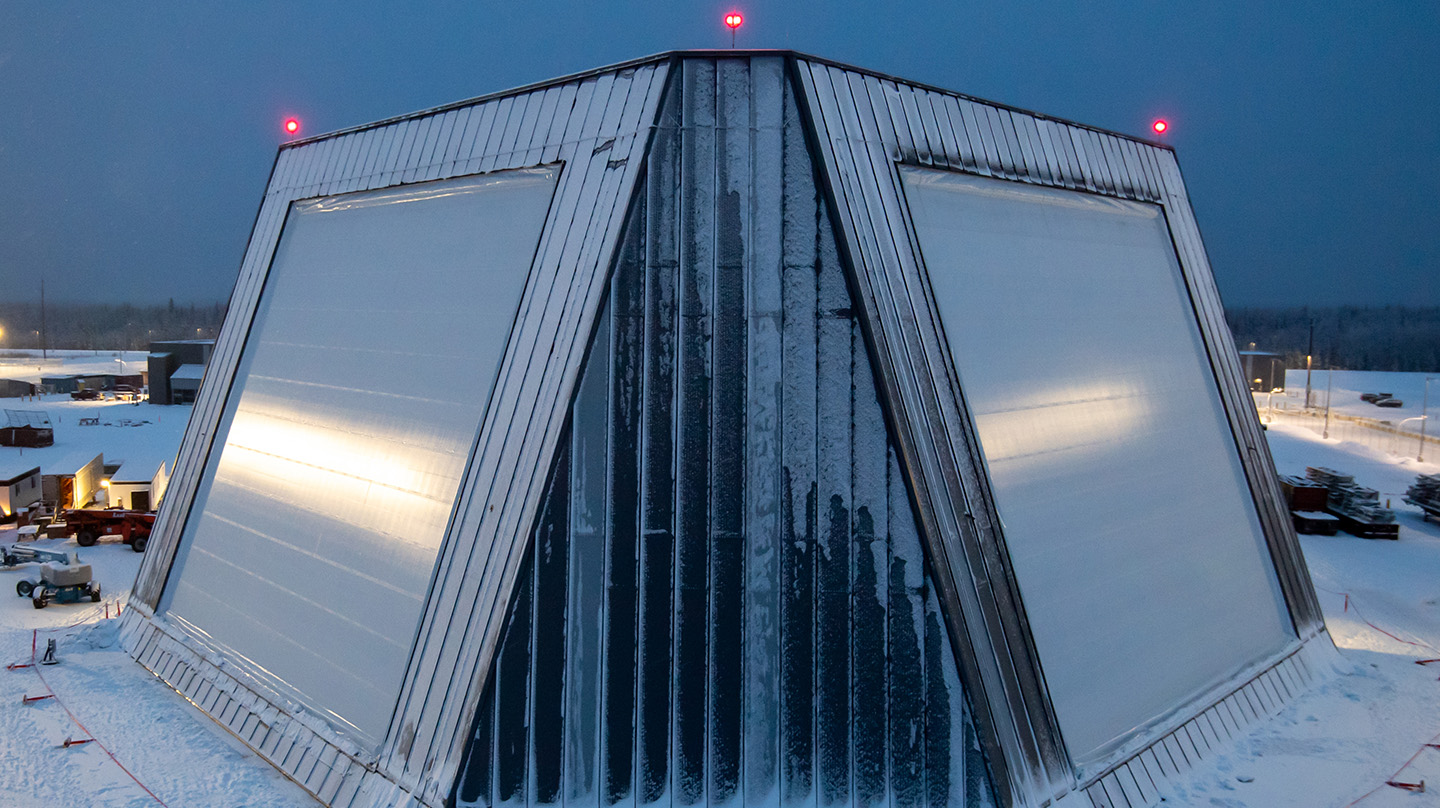News
Johns Hopkins APL-Led Study Culminates in Development of Long Range Discrimination Radar
Last December, years of engineering and technical leadership by the Johns Hopkins Applied Physics Laboratory (APL) in Laurel, Maryland, for the Missile Defense Agency (MDA) Ground Sensors Directorate culminated as Lockheed Martin built and installed the multimission Long Range Discrimination Radar (LRDR) at Clear Space Force Station, Alaska.
“This ballistic missile defense technology will help keep the U.S. and our allies safe from many rogue states that possess and threaten to use such weapons,” said Gerry Ricciardi, APL LRDR hardware technology readiness assessment panel team lead.
LRDR is a multimission, multiface radar capable of conducting integrated missile defense and space domain awareness (SDA) missions through a wide field of view. LRDR tracks and discriminates against multiple threats simultaneously, providing precision track, discrimination and hit assessment data to the Missile Defense System (MDS) firing units such as the Ground-based Midcourse Defense (GMD) System. LRDR combines the strengths of lower-frequency radars that excel at searching large volumes of space with higher-frequency radars that excel at determining which of the multiple objects are threats.
“APL’s involvement with the LRDR project started at its inception,” said Adam Kobulnicky, the system trade study lead for MDA. “APL and other members of the Federally Funded Research and Development Center/University Affiliated Research Center (FFRDC/UARC) LRDR team developed an initial set of four candidate radar concepts together with MDA. APL’s system trade team then conducted a thorough analysis that allowed MDA to understand the trade-offs in system performance relative to the location, the number of arrays, sensitivity, field of view and frequency bands.
“The systems trade study ultimately defined a final government reference concept that needed to be substantially more capable than the original concepts to enable the LRDR to meet MDA’s challenging homeland defense mission objectives.”
Before LRDR development could begin, APL developed the initial set of radar requirements in the form of the element specification, providing the detailed technical underpinnings for the government systems requirements review with contractor Lockheed Martin just four months after the LRDR contract award in 2016.
Once the requirements were agreed upon and radar development began, APL continued its technical leadership role, working with Lockheed Martin and the government product team to ensure the contractor met the goals and objectives of the original reference concept.
“With the Long Range Discrimination Radar, APL had the opportunity to follow the development of a critical BMD [ballistic missile defense] radar sensor from its conceptual phase through deployment,” Ricciardi said. “Throughout this process, we contributed to system architecture and concept analyses, requirements development, technology readiness panel and system testing. This comprehensive end-to-end experience as a Laboratory allows APL to be better positioned regarding sensor development. In addition to receiving numerous awards during this effort, the APL team authored several sections in the MDA TRA [technological readiness assessment] final report.”
“We have a small team of subject experts with a knack for identifying and understanding a system's most important technical elements for complex systems like LRDR,” said Steve Shollenberger, the APL program manager and overall FFRDC/UARC lead of the LRDR trade study. “This wasn’t a popularity contest, as I encouraged our team to continue being both rigorous and fair — giving due credit for well-executed contractor efforts while identifying deficiencies and risks.”
“APL has an excellent working relationship with the contractor, a critical element given the complex issues the team needed to work through to reach this latest successful milestone,” Shollenberger continued. “We conducted analysis and developed briefings articulating our most pressing concerns. We discussed the issues with our sponsor, demonstrating our technical depth while conveying the risks of inaction. Often, the Missile Defense Agency accepted APL’s recommendation.”
The APL team will continue to work on behalf of MDA and with Lockheed Martin to bring this radar to full operational capability in the coming years.
“MDA has a very challenging mission, and we are making a difference,” Shollenberger said. “We can’t be certain that LRDR will meet its mission objectives until integration and testing are completed. However, we know it will be more capable because of our involvement.”
